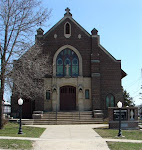What Are the Eight Myths About Church Music?
Dispelling eight myths about church music
Myth 1. When it comes to music, there's no debating taste
Many people think that the choice of music for Mass is just up to the pastor and his musicians. Some parishes have more traditional music, others more contemporary. Many parishes have a little bit of everything under the sun.
Most Catholics know that there are laws which govern church structure and worship, but many are not aware that the popes often have set down rules for what music is admissible in church worship.
In 1967 the Vatican issued Musicam Sacram as the musical legislation binding in the Catholic Church since the Second Vatican Council.
Music for the Mass is not arbitrary. Certain texts are designed by their very nature to be sung, such as the Alleluia. Others, although they may be recited, lend themselves to congregational or choral singing, such as the responses and the ordinary texts of the Mass like the gloria.
The church does not issue blacklists stating that certain songs are prohibited, but she does offer general principles in her liturgical documents. While the treasury of sacred music is broad indeed, what is sung at Mass must be consistent not with the tastes of liturgy planners, but with the celebration itself. Bishops and pastors may rule that certain selections are inappropriate based on their content, associations, or irrelevance. Music at Mass is not based on what we like, but on what is appropriate for the celebration.
Myth 2. Music at Mass is just a nice addition; it's not like it's necessary or anything.
Vatican II’s Constitution on the Sacred Liturgy calls sacred music an integral part of the liturgy. It is not an embellishment unrelated to the rites. The verb “to sing” is one of the most frequently used words in the Bible. Christian liturgy in ancient times was always sung.
In the Eastern Churches today the entire eucharistic liturgy is sung. “Saying” Mass became popular around the Middle Ages when private Masses multiplied, such that a distinction was made even ceremonially between a Low Mass with no music or hymns and a Sung Mass where the actual texts of the Mass were set to music.
Vatican II provides for the principle of progressive solemnity. Depending on various situations, more or less of the Mass may be accompanied by music. A cathedral on Easter Sunday should be different than a private Mass on a weekday. But the church’s preference is always for sung liturgy. He who sings prays twice, said St. Augustine, and the church’s prayer has inspired some of the most beautiful art and music in history.
Click on link below for the rest of the article:
Saint Paul Catholic Church, Pensacola, Florida




